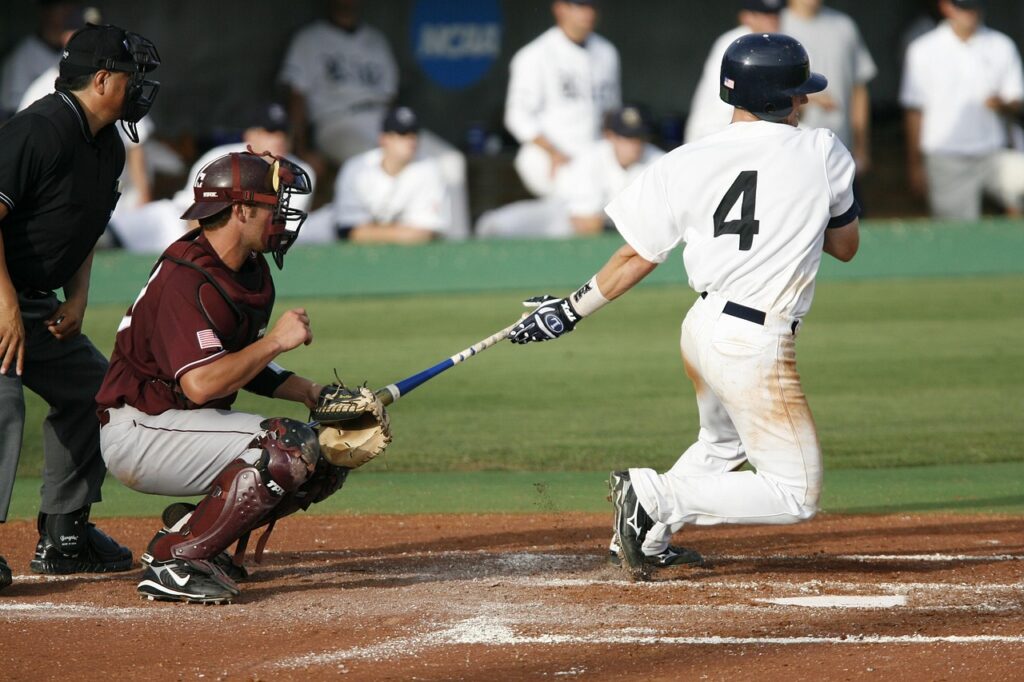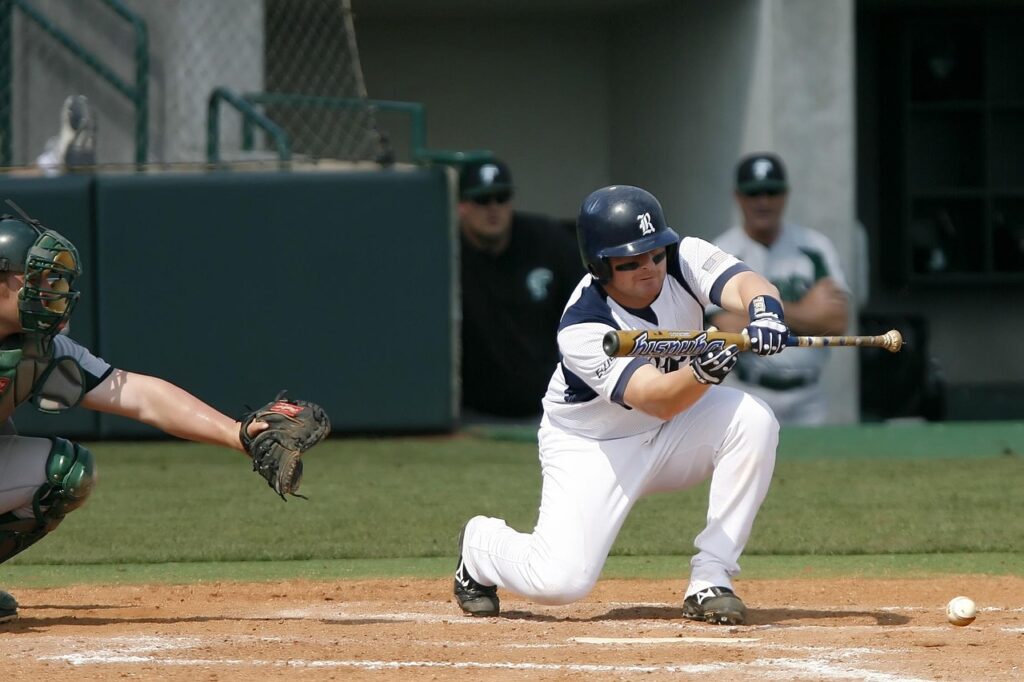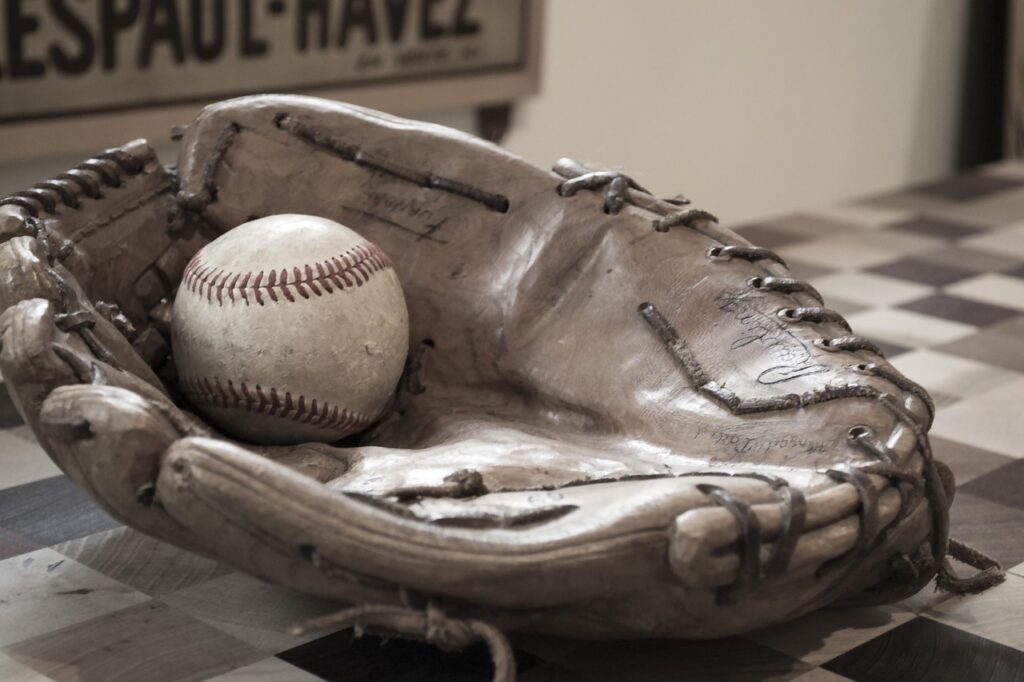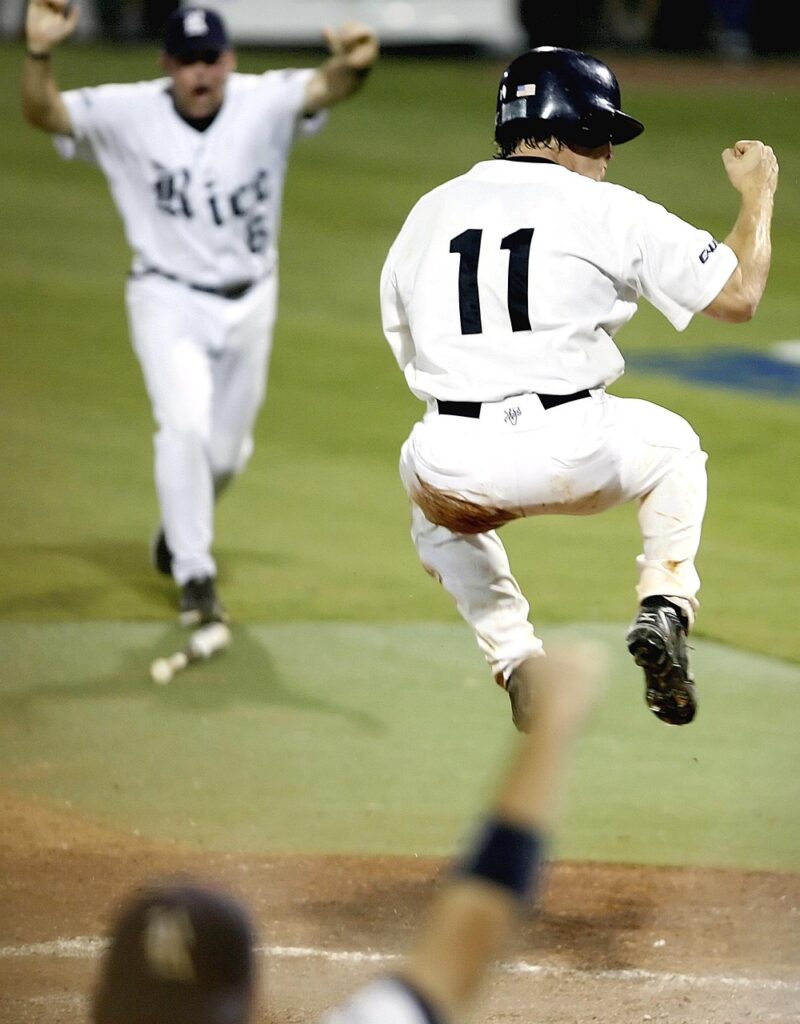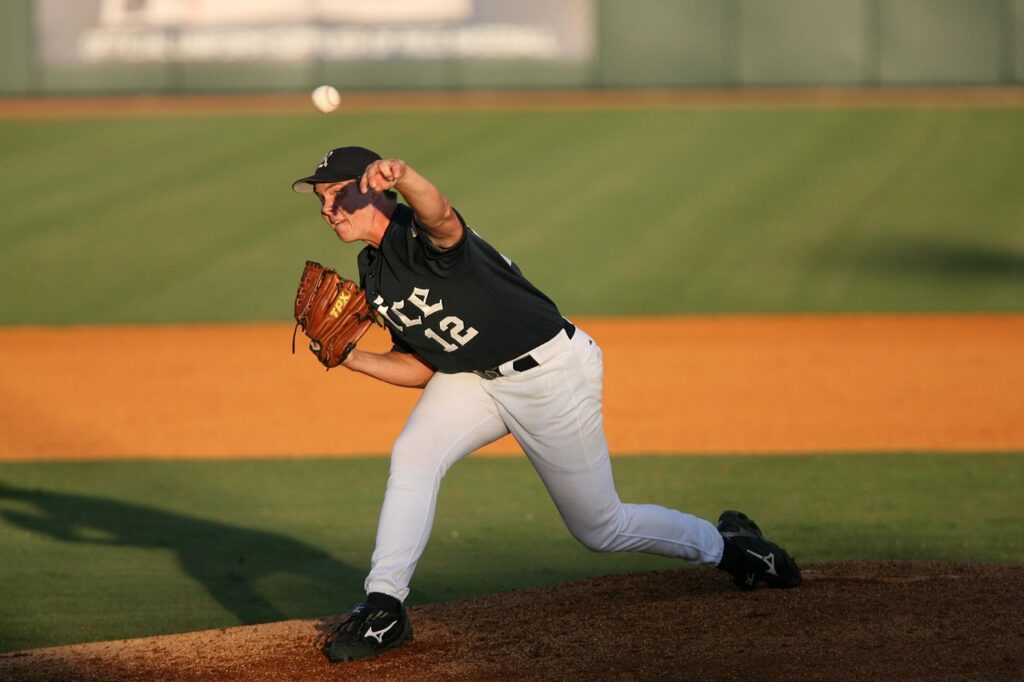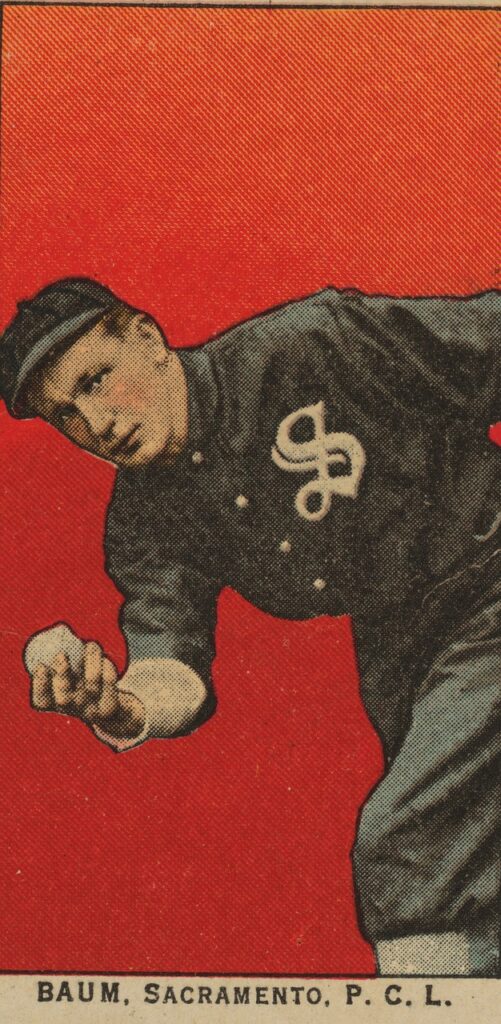
Orlando Cepeda, the formidable Hall of Fame first baseman whose powerful bat and radiant personality left an indelible mark on two National League franchises during the 1960s, passed away peacefully at his home on Friday at the age of 86. Affectionately known as “The Baby Bull” and “Peruchin,” Cepeda’s life was a testament to both extraordinary athletic achievement and profound personal resilience. His wife, Nydia, conveyed that he was surrounded by loved ones and listening to his favorite music, finding solace in his peaceful passing. The news of his death reverberated across the baseball world, eliciting heartfelt tributes from those who admired his contributions to the sport.
Major League Baseball Commissioner Rob Manfred acknowledged Cepeda’s stature as “one of the best hitters of his generation,” highlighting his star turns for three historic National League franchises and his 11-time All-Star status. Cepeda’s impact was immediate, earning him the 1958 National League Rookie of the Year award during Major League Baseball’s debut season in San Francisco. A decade later, he secured NL MVP honors during the St. Louis Cardinals’ World Championship season in 1967. Manfred underscored Cepeda’s journey, noting how he “overcame challenges throughout his life to build a Hall of Fame career” and recognizing him as a beloved figure from Puerto Rico who was instrumental in transforming baseball into a multicultural game.
Expressions of sorrow and profound respect also came from the San Francisco Giants organization, where Cepeda’s number 30 was retired and a statue stands as a permanent tribute. Giants chairman Greg Johnson described him as “a true gentleman and legend,” praising his role as a great ambassador for the game both during and after his playing career. Larry Baer, Giants president and chief executive officer, emphasized that beyond Cepeda’s extraordinary baseball accomplishments, it was “his generosity, kindness and joy that defined him.” The somber atmosphere permeated stadiums, including Oracle Park in San Francisco, where the Giants announced his passing during a game, a testament to the deep respect and affection held for this towering figure in baseball history.
1. **Early Life and Formative Years in Puerto Rico**Orlando Manuel Cepeda Pennes was born on September 17, 1937, in Ponce, Puerto Rico, into a family steeped in baseball tradition yet struggling with poverty. His father, Pedro Aníbal Cepeda, known as “Perucho” and “the Bull,” was a renowned professional baseball player in Puerto Rico, widely considered one of the best of his generation. This legacy naturally drew young Orlando to the game, earning him the nickname “the Baby Bull” in homage to his esteemed father. The family’s meager circumstances meant they lived in wood houses without modern amenities like telephones or refrigerators, a stark reality that would shape Orlando’s early life.
Despite his father’s talent, Pedro Cepeda could not play in Major League Baseball due to the color line that existed before Jackie Robinson’s groundbreaking entry in 1947. This racial barrier not only impacted his father’s career but also exposed Orlando to the harsh realities of racial discrimination through visits from players from the Negro Leagues who frequented their home. Orlando’s early interest in baseball was ignited when he first saw his father play in 1946. His own path to the big leagues was not without its hurdles, including a knee injury from playing basketball that kept him inactive for nearly a year and a doctor’s recommendation to avoid the sport entirely.
Determined to pursue baseball, Cepeda started by selling newspapers to participate in a tournament for paper boys, showcasing his innate drive. His first tryout at thirteen was unsuccessful, leading him to play basketball briefly. After recovering from his knee surgery, he resumed baseball, discovering a significant improvement in his physical strength. His talent was eventually spotted by an amateur player who recruited him for a team that went on to win Puerto Rico’s amateur championship. It was at such a game in 1953 that Pedro Zorilla, owner of the Santurce Crabbers, originally scouting another player, became captivated by Cepeda and brought him onto the team as a batboy. His father’s untimely death at age 49 from malaria, contracted while working for the government, further exacerbated the family’s financial distress, forcing them to move multiple times in search of better conditions and making college an unaffordable luxury for Orlando.
In 1955, Zorilla was instrumental in securing an airplane ticket for Cepeda to attend a New York Giants tryout. Successfully passing the tryout, he was initially assigned to the Class D team in Sandersville, then transferred to the Salem Rebels. Here, Cepeda faced profound challenges; he did not speak English and encountered the pervasive racial segregation of the Jim Crow laws that were prevalent in southern Minor League towns like Salem, Virginia. Shortly after this move, the devastating news of his father’s critical condition reached him, and Orlando returned to Puerto Rico to pay for the burial expenses before returning to Salem deeply depressed, his performance suffering.
His despondency led him to consider quitting and returning home, but Zorilla’s encouragement convinced him to join the Kokomo Giants in the Mississippi–Ohio Valley League. Under manager Walt Dixon, Cepeda was assigned to first base, where he immediately thrived. He batted in the cleanup spot, finishing the season with an impressive .393 average, 21 home runs, and 91 RBIs. His potential was undeniable, leading Jim Tobin, who owned his contract, to sell his player’s rights back to the Giants. After a brief visit to Puerto Rico, Cepeda was sent to the St. Cloud Rox in Class C, where he quickly adapted to the first base position and won the Northern League Triple Crown with a .355 batting average, 112 RBIs, and 26 home runs, signaling his readiness for the big leagues despite spending another year in the minors.
Read more about: Travel Hacking for Beginners: Your Actionable Guide to Earning a Free Domestic Flight in 6 Months

2. **The San Francisco Debut and Rookie of the Year Acclaim**The year 1958 marked a pivotal moment for both Major League Baseball and Orlando Cepeda. As the New York Giants made their historic relocation to San Francisco, transforming into the San Francisco Giants, Cepeda was called up to make his Major League debut. He signed his first major league contract for $7,000 just ten minutes before his inaugural game, an experience that introduced him to significant media attention in his new city. The move of both the Giants and the Brooklyn Dodgers to the West Coast signaled a new era for baseball, and Cepeda was poised to become a central figure in this coast-to-coast pastime.
Cepeda’s impact was immediate and profound, silencing any doubts about his readiness for the big leagues. By May 31, he had already amassed 13 home runs, a remarkable achievement that tied him for the second-most by a National League rookie through the end of May in baseball history, surpassed only by Albert Pujols in 2001. His exceptional performance prompted the team to raise his salary to $9,500 by June, an early recognition of his burgeoning talent. The Giants, fueled in part by Cepeda’s offensive prowess, led the pennant race for a month, though they ultimately finished in third place with a record of 80–74.
His rookie season statistics were nothing short of spectacular: a .312 batting average, 25 home runs, 96 RBIs, and a league-leading 38 doubles. These numbers placed him among the elite, as he and teammate Willie Mays were the only National League players to finish the season ranked among the leaders in hits, home runs, RBIs, batting average, runs scored, and stolen bases. Such comprehensive excellence made him an undeniable force, and his contributions were immediately recognized as essential to the Giants’ inaugural season in California.
Consequently, Cepeda was unanimously selected as the National League Rookie of the Year, becoming only the second player in MLB history, after Frank Robinson in 1956, to receive every single vote. This unanimous acclaim underscored the undeniable impression he had made on the league. In addition to national honors, he was also voted the Most Valuable Giant in a poll conducted by the San Francisco Examiner, receiving a plaque in recognition on September 28, 1958. His success extended beyond the field, as he used his initial salary to buy a new house for his mother, a testament to his strong family ties and humble beginnings.
Following his stellar MLB season, Cepeda continued to dominate in the Puerto Rican Professional Baseball League, winning the batting title with an average of .362 as his Santurce Crabbers secured the league championship. The Giants initially offered him a $12,000 contract for the following year, which he famously refused, demanding $20,000. After negotiations, a compromise was reached, and he signed for $17,000, a clear indication of his rapidly increasing value and his confidence in his own abilities.
3. **Ascension as a National League Power Hitter**With newfound confidence after his sensational rookie year, Orlando Cepeda reported to spring training in 1959 ready to build on his success. He started the season with an impressive hitting streak, recording 15 hits in his first 35 at-bats across nine straight games. Despite a brief slump in late May, Cepeda quickly rebounded, smashing 12 home runs by early June. A particularly spectacular game on June 4 saw him go 4-for-4, including a pair of home runs and a double, driving in seven runs in an 11–5 road victory over the Milwaukee Braves. His consistent excellence led to his selection as a starter in both All-Star games that season, a testament to his early emergence as a league star.
During this period, the Giants briefly moved Cepeda to third base to accommodate another power-hitting first baseman, Willie McCovey, in the starting lineup. However, Cepeda committed errors at the hot corner and was soon shifted to the outfield. The Giants remained competitive in the pennant race through the latter part of the season, but ultimately finished third after losing a critical series to the Los Angeles Dodgers. Despite the team’s eventual finish, Cepeda continued to lead by example, pacing the team in both batting average (.317) and RBIs (105), showcasing his offensive reliability.
In 1960, Cepeda was moved back to his natural first base position after McCovey was sent to the minor leagues. He concluded the season with a respectable .297 batting average, complemented by 24 home runs and 96 RBIs, maintaining his status as a key offensive contributor. Off the field, Cepeda continued to settle into his new city, moving twice within San Francisco, eventually purchasing a building next to the ocean with Willie McCovey, signifying a growing sense of roots and stability in California.
The 1961 season proved to be, by Cepeda’s own account, the pinnacle of his career statistically. He led the National League in several crucial categories, including RBIs (142), home runs (46), and at-bats per home run (7.9). A highlight of the season was his performance on July 4 in Chicago, where he went 5-for-5 with two doubles and a majestic three-run home run that soared over 500 feet to deep center field, driving in a career-high eight runs in a dominant 19–3 victory. He was once again an All-Star starter, reaffirming his elite status. Although the Giants finished third despite leading the league in runs scored, Cepeda’s individual brilliance was recognized as he finished second in the Most Valuable Player voting, narrowly behind Frank Robinson.
Following his outstanding 1961 campaign, Cepeda, who was earning $30,000 at the time, sought a $20,000 raise, citing his exceptional performance. The general manager, however, believed this was an excessive amount for a fourth-year player, leading to extended negotiations that eventually settled on a salary of $46,000. The 1962 Giants were a significantly improved team, engaging in a thrilling rivalry with the Dodgers for the league lead. Cepeda was among several Giants players who participated in the All-Star Games that year. The season culminated in a dramatic playoff series against the Dodgers, which the Giants won 2–1, propelling them to the World Series against the New York Yankees. Although the Yankees ultimately won in seven games, Cepeda had another strong year, batting .306 with 35 home runs and 114 RBIs, solidifying his reputation as one of the game’s premier sluggers.
Read more about: Davey Johnson: A Baseball Maverick’s Enduring Legacy — From World Series Champion Player to Iconic Manager Who Sparked Mets and Nats
4. **Navigating Talent Overload and Early Career Injuries**While Orlando Cepeda was ascending to superstar status, his tenure with the Giants was not without internal friction, particularly with manager Alvin Dark. The relationship between Cepeda and Dark became strained, reaching a point where Cepeda considered skipping games. Among Dark’s most controversial decisions was an order that Latin American players, including Cepeda, cease speaking Spanish in the clubhouse. Cepeda, fiercely proud of his heritage, immediately confronted Dark, a confrontation that led to the manager subsequently excluding Hispanic players from team meetings, further deepening the divide.
During the winter of 1962-63, Cepeda suffered a significant knee injury while training in the Puerto Rican Professional Baseball League. Despite the constant pain, he made the difficult decision to play through the entire 1963 season without informing the Giants, fearing it would jeopardize his spot on the roster. His dedication was remarkable, as he remained in contention for the batting title alongside greats like Roberto Clemente, Dick Groat, and Tommy Davis, ultimately finishing fifth. Despite the injury, his statistics for the year were impressive: a .316 batting average, 34 home runs, and 97 RBIs. By his 26th birthday, Cepeda had accumulated 1,105 hits, placing him 11th highest among 25-year-old players in MLB history, a testament to his early and sustained excellence.
The 1964 season saw the San Francisco Giants once again in the thick of the pennant race, holding contention until the final week before the St. Louis Cardinals clinched the flag. Cepeda continued to be a central offensive figure for the team, leading them in batting average with a solid .304 and a powerful slugging percentage of .539. His consistent performance, even with a nagging injury, underscored his immense talent and resilience, but the underlying physical issues were beginning to take a toll.
By 1965, the lingering knee injury became debilitating, severely limiting Cepeda’s participation in spring training. It was during this period that he was introduced to cannabis. A friend from Mexico brought him a jar containing alcohol and cannabis, presenting it as an “old Mexican remedy” to alleviate his pain. A clubhouse employee later offered him a cannabis “joint,” which he accepted, beginning a regular consumption of the drug to “relax.” As the season began, swelling in his knee intensified, leading a group of doctors to recommend he stop playing. However, with baseball being his primary source of income, Cepeda refused to quit.
He sought treatment from Gene Sollovief, a Russian doctor who implemented a weight and exercise regimen. Despite these efforts, Cepeda’s return to action in 1965 was largely ineffective, resulting in only 34 at-bats, a .176 average, and just one home run. He eventually returned to Puerto Rico for further physical therapy. In the off-season, he purchased a house in Diamond Heights as his wife was pregnant with their son, Orlando Jr. Despite his efforts to recover, he was not placed in the team’s starting lineup for the 1966 spring training, signaling an impending change in his career trajectory.
5. **The Pivotal Trade to St. Louis and Unanimous MVP Season**The anticipated change in Orlando Cepeda’s career materialized dramatically on May 8, 1966. In a move that many Giants fans would come to regard as the worst in the club’s history, Cepeda was traded to the St. Louis Cardinals for left-handed pitcher Ray Sadecki. The trade occurred while the Giants were in St. Louis playing a series against the Cardinals, meaning Cepeda simply switched clubhouses, joining his new team on the spot. Giants fans had reason for their dismay: Sadecki, a 20-game winner in 1964, went 3-7 for the Giants in ’66, contributing to their finish 1.5 games behind the first-place Dodgers.
Cardinals general manager Bob Howsam had identified Cepeda as a crucial acquisition to bolster his team’s struggling offense. Recognizing Cepeda’s immediate value, the Cardinals granted him a new contract for $53,000. With the assistance of the Cardinals’ beloved announcer, Harry Caray, Cepeda found a new home in Olivette, Missouri, beginning his integration into the St. Louis community. Although the Cardinals finished sixth with an 83–79 record in 1966, Cepeda made an immediate impact, concluding his first season with St. Louis with a .303 batting average in 123 games, earning him the National League Comeback Player of the Year award.
The 1967 season proved to be a magical one for both Cepeda and the St. Louis Cardinals. Analysts had given the team long odds of 12–1 to win the pennant, but Cepeda ignited their season with a strong start, driving in seven runs in the first four games. The team fostered an exceptional offensive environment, even implementing a unique system where players were fined a dollar for leaving teammates on base, with the accumulated money funding the postseason party. This collective effort, coupled with Cepeda’s consistent hitting, saw the Cardinals contend with the Chicago Cubs early on before taking decisive control of the pennant race as the season progressed.
Cepeda’s offensive stability was a cornerstone of the Cardinals’ success. He finished June as the league’s leader in doubles and was selected to play in his seventh All-Star Game, which the National League won 2–1. His individual brilliance culminated in August, when he was named NL Player of the Month for the only time in his career, batting an outstanding .352 with 5 home runs and 25 RBIs. The Cardinals ultimately secured the pennant by a commanding 10.5 games with a 101–60 record, and then went on to defeat the Boston Red Sox in a thrilling seven-game World Series, with Cepeda playing a pivotal role.
Cepeda concluded the 1967 season with a .325 batting average, contributing 21 game-winning hits and leading the league with 111 RBIs. His extraordinary performance was overwhelmingly recognized, as he was named the National League Most Valuable Player by a unanimous vote. He became only the second NL player, after Carl Hubbell, to achieve this distinction, and one of a select few players in major league history, including Albert Pujols, Frank Robinson, and Mike Trout, to win both Rookie of the Year and MVP awards unanimously. Furthermore, Cepeda was the first Latin player to win both the home run and RBI titles. His importance to the team was famously encapsulated by ace pitcher Bob Gibson, who, waiting on the team bus, declared, “This bus isn’t going anywhere without Orlando,” a powerful testament to Cepeda’s indispensable presence in the lineup.
Read more about: Beyond the Limelight: 15 Celebrities Who Bravely Served in the Vietnam War
6. **Later Career Transitions: Atlanta, Oakland, and the Designated Hitter Era**The 1968 season, widely known as the “Year of the Pitcher” due to the overwhelming dominance of pitching, presented significant challenges for many offensive players, including Orlando Cepeda. Despite the Cardinals securing their second consecutive pennant, Cepeda recorded the worst statistical year of his regular playing career, with a .248 average, 16 home runs, and 73 RBIs. This statistical dip, coupled with his late arrival to spring training in 1969, signaled an impending shift in his career trajectory.
Just before the 1969 season commenced, Cepeda was unexpectedly traded to the Atlanta Braves for third baseman Joe Torre. Initially, the trade took him by surprise and prompted thoughts of retirement, but after discussions with his wife, he accepted the new challenge. Moving to Atlanta, he harbored concerns about racial segregation, but these anxieties quickly dissipated as he settled in. He received a warm welcome from team legend Hank Aaron during spring training in West Palm Beach.
Cepeda’s impact in Atlanta was immediate and significant. He achieved his 300th career home run on August 4, 1969, and played a crucial role in the Braves winning the inaugural National League West division title. Despite their loss in the NL Championship Series, Cepeda finished the season with 22 home runs and 88 RBIs. The 1970 season proved even more productive; he reached the 2,000-hit mark on July 11 and had the only three-home run game of his career on July 26, driving in seven runs. He concluded 1970 with a .305 average, 34 home runs, and 111 RBIs.
However, the resurgence was short-lived. In 1971, a re-injury to one of his knees forced him into a part-time role after a strong start. Subsequent medical evaluations confirmed the injury’s seriousness, leading to surgery in New York. He returned to play in 1972 amidst persistent pain, eventually being traded to the Oakland Athletics in July. His brief stint in Oakland was limited to pinch-hitting duties before another knee surgery sidelined him. Following a telegram from Athletics owner Charlie Finley, Cepeda, disheartened, intended to retire from baseball.
Yet, a new opportunity emerged in 1973 with the American League’s introduction of the designated hitter rule. The Boston Red Sox recruited Cepeda, making him the first player to sign a contract to exclusively play as a designated hitter. He immediately thrived, hitting a walk-off home run in his first game and later recording a career-high four doubles and six RBIs. Cepeda finished the year with a .289 average, 20 home runs, and 86 RBIs, earning him the inaugural Outstanding Designated Hitter Award. He also became the first player to hit 20 or more home runs with four different teams. His final major league season came in 1974 with the Kansas City Royals, where he batted .215 before retiring, recognizing his body could no longer meet the demands of professional baseball.
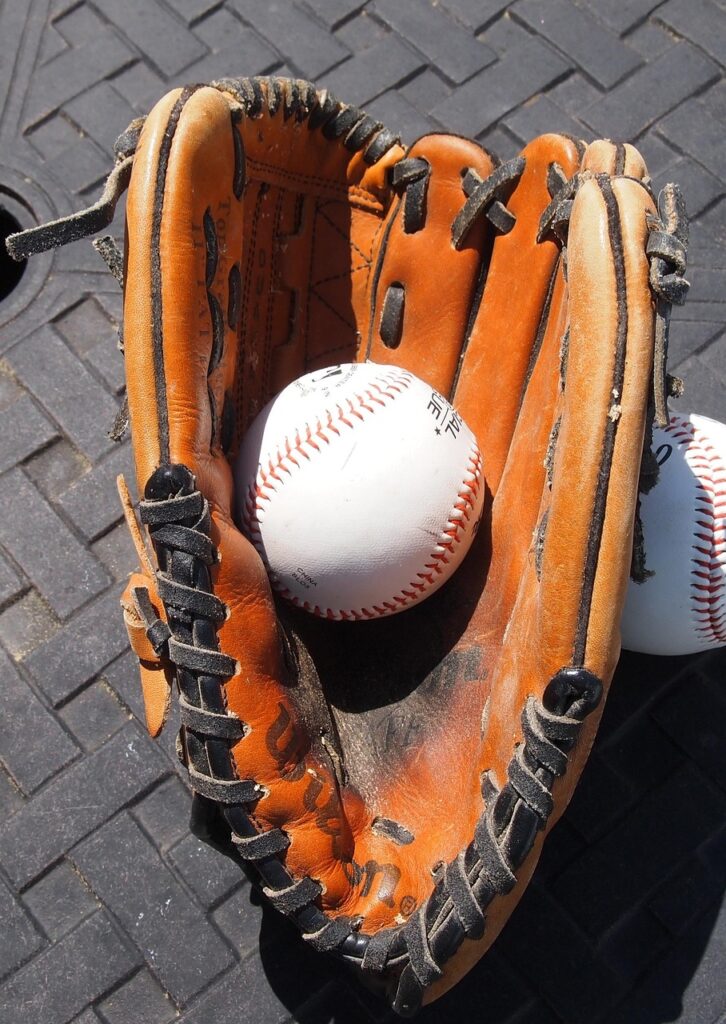
7. **The Lingering Shadow: Post-Career Struggles and Legal Battles**Orlando Cepeda’s retirement in 1974 marked not a period of calm, but the beginning of profound personal and legal challenges that significantly marred his public image. That same year, while directing a baseball clinic in Colombia, he was persuaded by drug dealers to transport five pounds of cannabis, concealed within handmade clothing. This decision, influenced by his personal use of cannabis since 1965 for pain relief, set in motion a devastating chain of events.
Upon his return to Puerto Rico, Cepeda discovered the shipment actually weighed 170 pounds, far more than anticipated. At the airport, with police already aware of the packages, he was given the boxes and promptly arrested for drug possession, initiating a deeply troubling chapter. His legal troubles quickly escalated; while awaiting trial, he faced a second arrest following an allegation of pointing a gun at a man. Additionally, his former wife, Pino, filed a third case seeking increased alimony and child support payments. These concurrent legal battles cast a long, dark shadow over his celebrated career.
In 1978, after a three-day trial, Cepeda was convicted of drug possession and sentenced to five years imprisonment. He served ten months in jail, with the remainder of his sentence under probation. Following his release, a grave warning from a Puerto Rico district attorney about potential mafia threats if he returned to the island necessitated his assignment to a halfway house in Philadelphia, Pennsylvania. This forced relocation further disrupted his life and severed immediate ties to his homeland.
After completing the halfway house program, Cepeda attempted to re-engage with baseball. He briefly coached a team in the Puerto Rican Professional Baseball League and later secured a scouting position with the Chicago White Sox in 1981, followed by a role as a roving instructor. However, this stint was short-lived, as the White Sox released him later that year. He then briefly returned to coach the Santurce Crabbers, highlighting a period of intense personal rebuilding and a struggle to find stable professional footing after his playing glory.
8. **Rebuilding a Life: Redemption and a Return to the Giants Family**A significant turning point in Orlando Cepeda’s life, emblematic of his resilience, arrived in 1987. Max Shapiro invited him to substitute for Willie McCovey at a “fantasy baseball camp” in San Francisco. Initially hesitant, Cepeda’s acceptance proved pivotal. At the camp, he befriended publisher Laurence Hyman, who introduced him to San Francisco Giants staff members and encouraged him to write to general manager Al Rosen, expressing his desire to return to the organization.
After an initial delay, Patrick J. Gallagher contacted Cepeda with the news that Al Rosen wanted to hire him as a scout. This marked a profound return to the Giants, the team where his Major League journey began. His initial year involved extensive scouting in the Dominican Republic, Mexico, and other Latin American countries, leveraging his deep knowledge and Spanish language skills. His dedication and effectiveness quickly earned him a full-time payroll position with the Giants, solidifying his reintegration into professional baseball.
Beyond scouting, Cepeda embraced a deeply meaningful role as a goodwill ambassador for the Giants. He dedicated himself to attending events in schools, hospitals, and community centers, particularly in northern California. This work allowed him to reconnect with fans, inspire youth, and share his passion for baseball, actively contributing to the communities that had once celebrated his athletic achievements. His humanitarian efforts during this period were instrumental in repairing his public image, showcasing a profound personal transformation and a renewed commitment to giving back.
This phase of his life was characterized by quiet dignity and a genuine desire to make amends and serve as a positive role model. The stark contrast between his earlier struggles and this dedicated community engagement was compelling. His visible presence and tireless work as an ambassador not only restored his reputation but also reinforced the Giants’ connection to their historical figures. It was a powerful testament to personal growth and the enduring bond between a player and his team, allowing “The Baby Bull” to once again be cherished, not just for his past glories, but for his continued positive impact.

9. **The Call to Cooperstown: Hall of Fame Induction**Despite his undeniable brilliance on the field, Orlando Cepeda’s journey to the Baseball Hall of Fame was neither immediate nor straightforward. He became eligible for election in 1980, but for many years, he consistently fell short of the required 75 percent of votes from the Baseball Writers’ Association of America (BBWAA). The complexities of Hall of Fame voting, often extending beyond mere statistics, coupled with his personal challenges and legal issues, undoubtedly contributed to this prolonged wait.
His closest attempt through the BBWAA ballot occurred in 1994, his final year of eligibility. With significant campaigning from the San Francisco Giants organization and a network of dedicated supporters, Cepeda garnered 73.5 percent of the vote, heartbreakingly falling just seven votes shy of induction. This near-miss underscored the agonizing nature of the voting process for a player whose on-field resume was clearly worthy of baseball’s highest honor.
However, a triumphant resolution eventually arrived. In 1999, the Veterans Committee, established to reconsider players from earlier eras who might have been overlooked, elected Orlando Cepeda to the Baseball Hall of Fame. This long-awaited induction was a moment of profound vindication and joy for Cepeda, his family, his fans, and the broader baseball community, particularly in Puerto Rico. He became only the second native Puerto Rican, following the legendary Roberto Clemente, to achieve this prestigious honor, cementing his place in baseball history and as an icon for Latin American players.
Further recognition followed that same year when the San Francisco Giants fittingly retired Cepeda’s jersey number, 30, a permanent tribute to his indelible impact on the franchise. The celebrations continued into 2008 when a magnificent nine-foot-tall statue of Cepeda was unveiled outside Oracle Park. Unique among the sculptures of other San Francisco-era Hall of Famers, who are depicted in active poses, Cepeda’s bronze image shows him standing and smiling, poised to throw a ball for a game of catch. This portrayal perfectly symbolizes his genial nature, his deep love for the game, and his cherished role as a beloved ambassador.
10. **An Enduring Legacy: “The Baby Bull’s” Impact on Baseball and Beyond**Orlando Cepeda’s passing at 86 marked the close of a life as complex and challenging as it was triumphant and influential. He leaves behind an enduring legacy as one of baseball’s most formidable hitters and an athlete whose journey mirrored the evolving landscape of American society and the sport itself. An 11-time All-Star, NL Rookie of the Year, and unanimous MVP, Cepeda’s career statistics—a .297 batting average, 379 home runs, and 1,365 RBIs over 17 seasons—speak volumes about his consistent excellence and raw power at the plate. He was undeniably a force, “The Baby Bull” who commanded respect with every swing.
Beyond his impressive numbers, Cepeda played a pioneering role as one of the most prominent Latin American athletes in Major League Baseball. His journey, marked by linguistic barriers and encounters with racial discrimination under Jim Crow laws, highlighted the significant challenges many non-white players faced in his era. Yet, he persevered, becoming a beloved figure from Puerto Rico who, as Commissioner Rob Manfred noted, was instrumental in transforming baseball into a multicultural game. His success paved the way and inspired countless other Latin American talents, profoundly shaping the sport’s global identity.
His personal story of resilience, from battling poverty and chronic injuries to overcoming legal troubles and ultimately rebuilding his life, adds a profound layer to his legacy. His return to the Giants organization as a scout and goodwill ambassador demonstrated a powerful commitment to making amends and contributing positively to the game and its communities. This redemption arc, culminating in his Hall of Fame induction by the Veterans Committee, stands as a testament to the human spirit’s capacity for growth and recovery. The unanimous recognition for both his Rookie of the Year and MVP awards places him among an elite group of baseball legends, underscoring the undeniable impact of his peak performance.
The heartfelt tributes from across the baseball world following his death—from Commissioner Manfred calling him “one of the best hitters of his generation” to Giants CEO Larry Baer emphasizing his “generosity, kindness and joy”—underscored the deep affection and respect he commanded. His statue outside Oracle Park, depicting him with a warm smile and a ball for a game of catch, perfectly encapsulates the genial personality that endeared him to fans. Orlando Cepeda was more than just a powerful slugger; he was a bridge between eras, a symbol of perseverance, and a cherished ambassador for the game, whose presence will be profoundly missed but whose impact will continue to resonate for generations to come. He truly was a legend, in every sense of the word.


